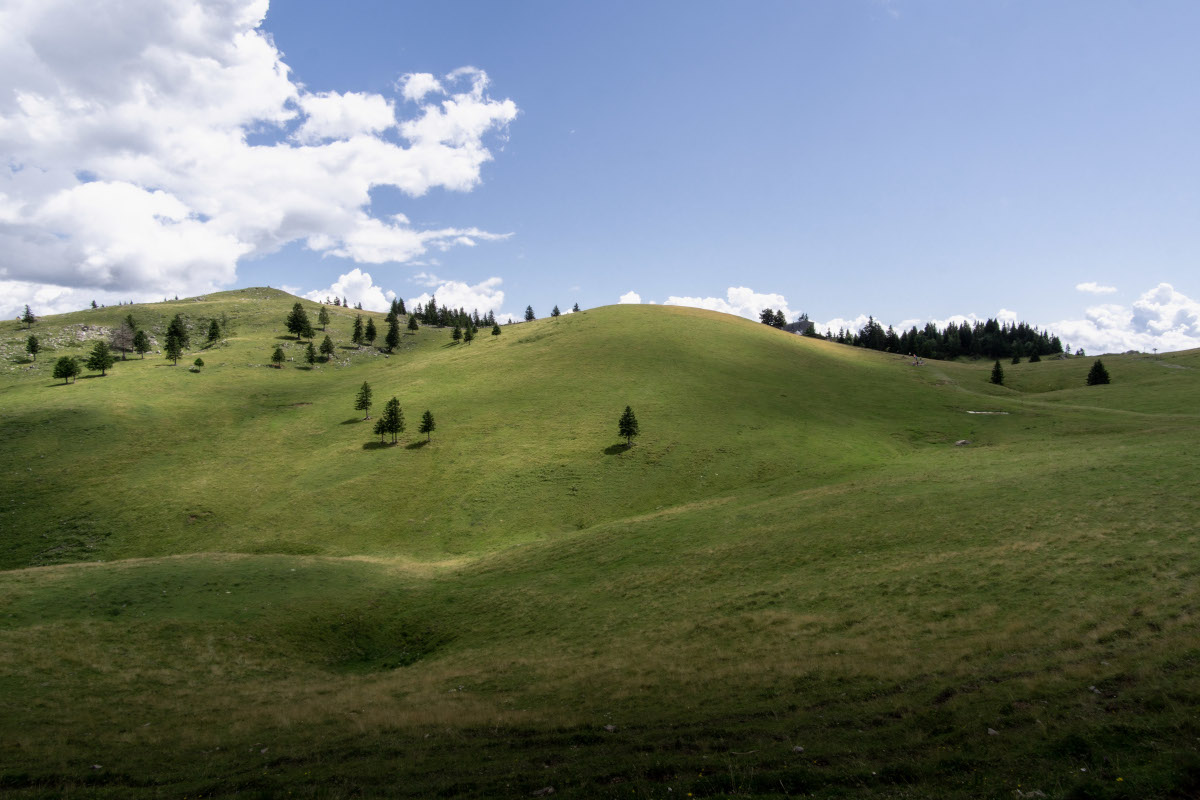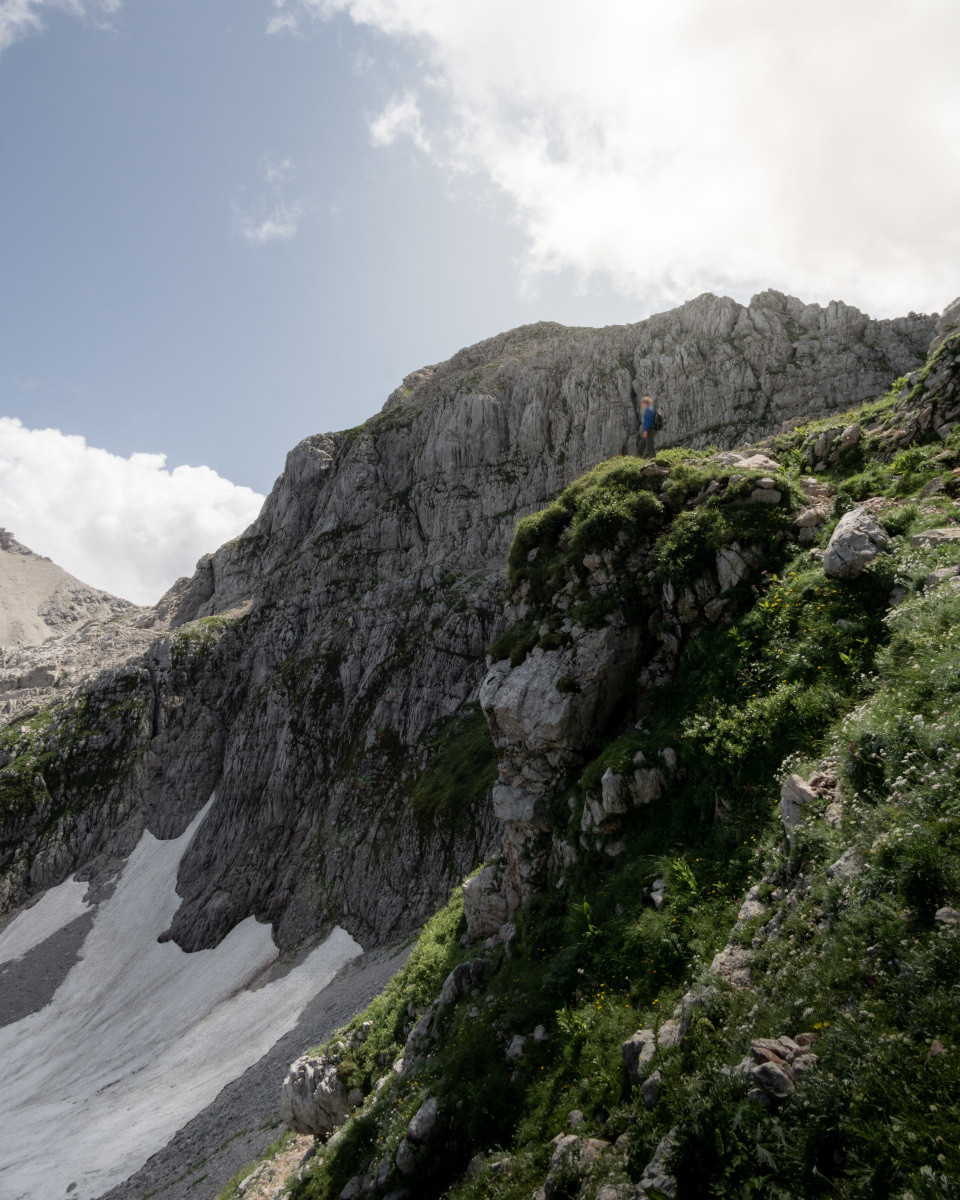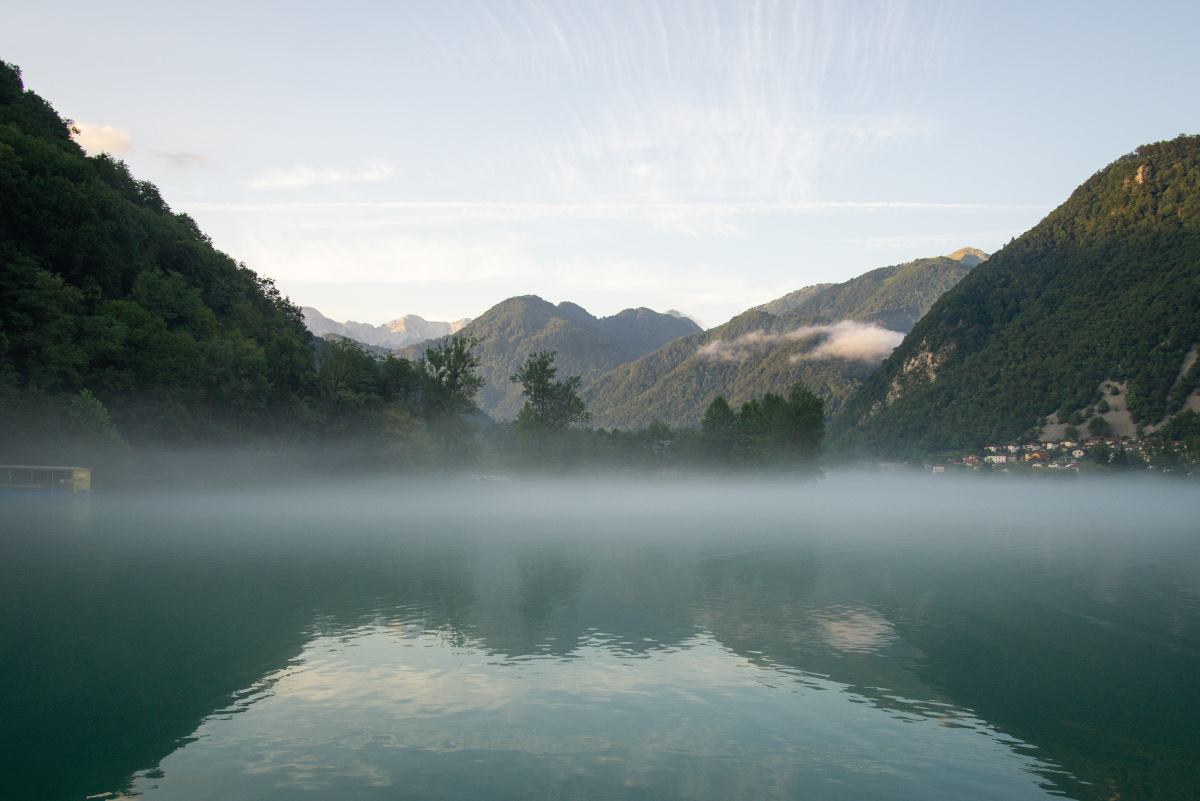Slovenia is a European country located between the Alps and the Adriatic Sea. Due to its diverse landscape, Slovenia is especially popular with outdoor and hiking vacationers. About 13% of the country’s area is protected, so a trip to Slovenia promises adventures in countless nature parks. Most tourists are drawn to the Julian Alps, Karavanke and Kamnik-Savinja Alps in the north of the country, where the two popular destinations Triglav National Park and the Soca Valley are also located. But also, the low mountain ranges, forests and lakes in the south of Slovenia promise breathtaking nature experiences. Here you will meet brown bears, the largest caves in Europe and picturesque Slovenian villages.
On my travel blog I will show you beautiful hikes that I have done myself in Slovenia and give you helpful tips and information especially about hiking in Slovenia. I’m glad you came to my travel blog and hope you enjoy reading my travelogues.
The Slovenian nature parks and hiking opportunities
In Slovenia there is a national park that stretches across the Julian Alps and is called Triglav National Park. It is the hiker’s paradise of Slovenia. Other popular destinations include the Kamnik-Savinja Alps, the Soca Valley and the Karavanke Mountains. Furthermore, there are over 40 landscape and nature parks in Slovenia, which offer excellent opportunities for hiking. Examples include the Logar Valley, the Kolpa or the Skocjan Caves Regional Park. In total, over 13% of the country is protected. So active vacationers and nature lovers will not be disappointed in Slovenia.
Best time to go hiking and weather in Slovenia
For active vacations and hiking I recommend you to travel to Slovenia between April and October. In midsummer it is very hot, especially in the southern regions, and thunderstorms are more frequent in the midday hours. In general, November is the month with the most rainfall, but in the Alpine regions there is also a lot of rain in May, June and August. Between November and April snow is to be expected in the alpine regions, but even in July there can still be snow fields in the heights of the mountains. On the following website you can find detailed information about the climate in Slovenia. Before you go on a hike, you should always check the weather forecast first. The website of the Slovenian Meteorological Service is a good place to start.
Blog articles and travelogues about my hikes in Slovenia
Below you can see blog posts about my round trip in Slovenia. In these blog articles I present you beautiful hikes that I have mastered myself during my trip. Here you will find a lot of tips for hiking and personal impressions of the Slovenian nature.
-
AdventureEuropeHikingNature
The most beautiful river in Slovenia – Hiking along the Soča River
by ArneSlovenia is located between the Alps and the Adriatic Sea and due to its fascinating nature is especially interesting as a …
-
ActiveEuropeHikingNature
Circular Hike to Krn – The southernmost High Peak of the Slovenian Alps
by ArneWild landscapes, great nature experiences and diverse sights await you on a trip to Slovenia. The country is especially popular with …
-
Slovenia is known for great landscapes and nature experiences. That is why the country is especially popular with outdoor and hiking …
-
CultureEuropeHikingNatureSights
Velika Planina – Hike to the most beautiful Alpine Settlement in Slovenia
by ArneDue to its diverse landscape, Slovenia is especially popular with outdoor and hiking vacationers. A trip to Slovenia promises adventure in …
Hiking trails in Slovenia
There are over 10,000 kilometers of marked hiking trails in Slovenia, managed by the Slovenian Alpine Association or local tourism organizations. In general, the hiking trails in Slovenia are in very good condition.
Marking of the hiking trails
Hiking trails of the Alpine Association are marked with the Knafelj mark (white dot on a red circle). This point can be found on stones, trees, or signposts. Furthermore, a yellow dot on a red circle marks the European long-distance hiking trails. Circles with other colors mostly mark thematic trails. Hiking trails managed by other organizations are usually marked by colored symbols. In general, you should never hike on unmarked trails, especially in the high mountains. You can find a current list of closed or damaged hiking trails on the website of the Alpine Association. Signposts in Slovenia usually indicate the current sea level, the destination (in Slovenian), the hiking time to get there, and the level of difficulty.
Difficulty of the hikes
Hiking trails in Slovenia are classified into three difficulty categories. A solid line and/or no symbol before the destination means that it is an easy hike. A dotted line and/or a triangle mark a difficult hiking trail. If there is also an exclamation mark in the triangle, it is a very difficult hiking trail.
If you are looking for more information about hiking or hiking routes in Slovenia, check out these hiking guides. The books are small and handy, provide useful hiking information and detailed descriptions of the hikes. I’ve been able to discover great hikes through them that I wouldn’t have found without these books.
Safety tips for hiking in Slovenia
- In case of emergency, dial 112 for the Slovenian mountain rescue service
- Take out an international health insurance (mountain rescue can be expensive)
- Let someone know where you are hiking to
- Book your accommodation in advance and cancel if something comes up
- Check the weather forecast before hiking (www.meteo.si)
- Hike only on marked trails
- Wear appropriate hiking shoes and clothing
- Take a first aid kit with you
- Take a hiking map (I use the app Locus Map)
- Take enough water and provisions with you
- Beware of falling rocks when encountering a herd of ibexes
- An encounter with brown bears is extremely unlikely. If contact is made, remain calm and move away slowly. Do not run away and do not make any frantic movements
If you are unsure or prefer to go hiking in company, there is a possibility to join a guided tour. You don’t have to worry about route planning, food or transportation, but you can completely focus on the beauty of Slovenian nature. I recommend booking a tour through the portal of Viator, where countless activities around the world can be booked easily and safely.
Hiking equipment in Slovenia
Depending on the region, the altitude, the season, and the length of the hike, you need different equipment for hiking. Everyone has their own preferences when it comes to equipment, but below I’ll give you an overview of my own equipment. Generally, I buy my hiking equipment at regional outdoor stores. The following links lead to Amazon to get an idea of the respective equipment.
Hiking boots
Most important are sensible hiking shoes or hiking boots. These must fit perfectly and should therefore be tried on by a specialist before buying. I personally wear the Trovat Advanced II High GTX from Mammut** for long mountain tours and the Peakfreak Venture Waterproof from Columbia** for easy hikes.
Equally important, in my opinion, are hiking socks that fit your feet, warm, or repel moisture. Make sure that the socks do not wrinkle, because that’s how blisters occur. I wear the TK2 Cool Wandersocken from Falke** and in very warm temperatures the Hiking Light Merino Mid Socks from CEP**
Clothes for hiking
When it comes to hiking pants, there are countless designs. There are waterproof, quick-drying, warming, or lightweight pants. You have to decide for yourself what the best pants are for you. I wear hiking pants from Frilufts and Columbia**
Furthermore, a short functional shirt (Schöffel**) in summer and/or a long functional shirt (Berghaus**) should not be missing. A warmer top such as fleece sweater (Vaude Rosemoor Fleece**) or jacket should also be present. Extremely important is a good rain jacket that keeps you dry and warm in thunderstorms and rain. For long tours lasting several days, underwear made of odorless merino wool is also recommended (Schöffel Boxershorts**).
Equipment for hiking
There are different backpacks for hiking. Some are only suitable for day trips and others are suitable for multi-day hut tours. For multi-day tours, I recommend a size of at least 35 liters. I use the 38-liter backpack Traverse 38 S von Ortovox** For day tours, a 20-to-30-liter backpack such as the Crosstrail 24 Lt** is sufficient. Make sure you have an integrated rain cover. A hydration bladder is also practical, which can be stowed in the backpack and facilitates drinking**
In the alpine terrain in the Julian Alps hiking poles can be interesting for you. These are available in all possible designs and a consultation in a specialty store is recommended.
If you want to spend the night in the Slovenian mountain huts, bring a hut sleeping bag. There are very light and stowable sleeping bags** especially for trekking. Furthermore, you are not allowed to enter the huts with hiking boots, so you must have hut shoes or slippers with you. I use conventional slippers for the case.
Especially in the high mountains there is no protection from the sun in summer. Therefore, wear headgear and remember to wear enough sunscreen. Tick protection is recommended in lower forest regions.
Accommodation and mountain huts for multi-day hikes
There are over 175 mountain huts with over 6000 beds in Slovenia, which allow hikers to spend the night in the mountains. A bed can be booked in advance. In a dormitory, an overnight stay costs between 18 and 30 euros. Members of the Alpine Association get up to 50% discount. You can find more information and reservation options on the website of the Slovenian Alpine Association.
Of course, there is also the possibility to stay in hotels, hostels, or guesthouses in the low-lying regions. I recommend staying in one of the many authentic Slovenian private accommodations. You’ll find these mostly family-run guesthouses throughout the country. Many of them stay away from the well-known online portals, so you’ll have to call ahead or ask at the tourist information office in the village. The easiest way, however, is to book, for example, via Booking.com*
How to get to the Slovenian hiking areas
You are most flexible with your own car. The road conditions in Slovenia are very good. There are parking places for hikers in Slovenia, which are mostly free of charge. Note that you need a vignette for Slovenia, which costs 15 euros for 7 days and 30 euros for 30 days for a normal car.
The country has a very good train and bus network, so you can reach all regions by public transport. Train and bus tickets are comparatively cheap in Slovenia. However, the trains are in a rather dilapidated condition and move very slowly. You can find more information and timetables on the website of the railroad company or the Slovenian bus company. Unfortunately, there is rarely a bus stop at the starting points of popular hikes. An extra way from the bus stop to the start of the hike must therefore often be planned. It is easier to book a rental car.
I hope you enjoyed my travelogue about hiking in Slovenia. On my Slovenia Blog I show you other beautiful travel destinations in Slovenia and share valuable tips and experiences for your trip to Slovenia. Did you like my blog post? Was I able to help you? Then I would be happy if you recommend my travel blog, leave a comment, or follow me on Instagram. Thanks for reading and have fun on your vacation in Slovenia.
If you are looking for a travel guide to Slovenia, check out this book. I personally like this travel guide series very much. The authors give travel tips especially for individual and low budget travelers. Moreover, not only the well-known sights are described, but also more unknown places are mentioned.
The references marked with an asterisk (*) are so-called commission links. If you click on such a referral link and buy something, I get a small commission from the provider. For you, the price does not change! I see it as a small thank you for my work and look forward to any support.










